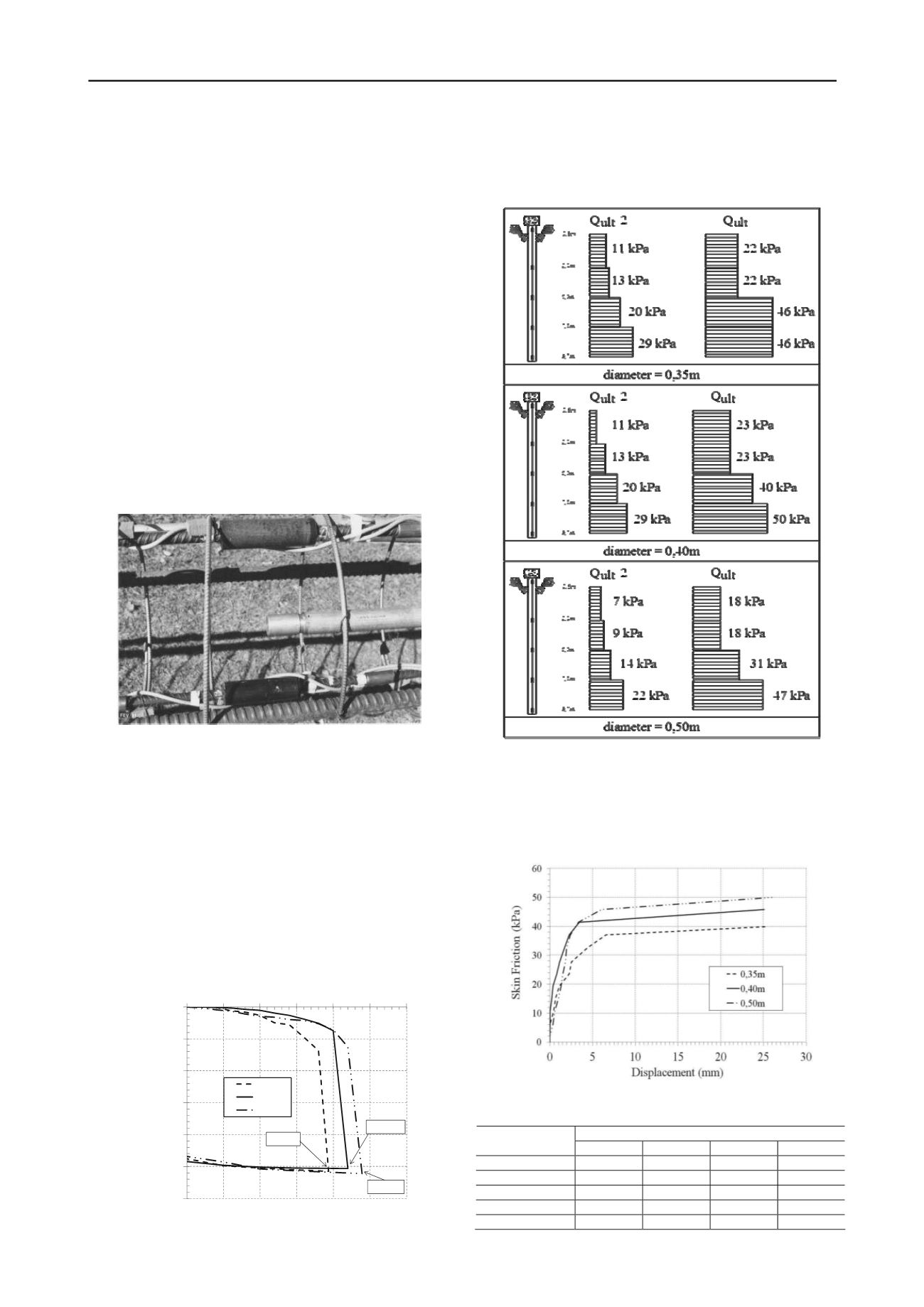
2708
Proceedings of the 18
th
International Conference on Soil Mechanics and Geotechnical Engineering, Paris 2013
N.B.
n
(bulk specific weight), w (water content),
Gs
(grain density), e
(avoid ratio), n (porosity), Sr (degree of saturation), c’ (cohesion – CD
triaxial);
' (friction angle – CD triaxial)
4 PILES AND INSTRUMENTATION
Three 10m long auger bored piles were inserted with respective
diameters of 0.35m, 0.4m and 0.5m. The boring was carried out
without using water. The concreting was carried out
immediately following the opening of the holes. The simple
compression resistance of the concrete used was 26MPa at 28
days.
The reinforcement of the piles consisted of two 20mm and
two 32mm corrugated steel bars, both 10m in length.
The instruments consisted of strain gauges at five levels
along the depth (0.6m – reference section; 3.1m; 5.3m; 7.5m;
9.7m). The strain gauges were connected in full bridge to 20mm
steel bars, 0.6m long, which were screwed to the reinforcement.
At each level along the depth, two diametrically opposed,
instrumented bars were installed (Figure 1).
Tell tales were also installed on the piles but these did not
give precise readings for analysis due to the low displacement
values measured.
Figure 1. Instrumentation using strain gauges and tell tales.
3 LOAD TESTS
The load tests were of the slow maintained load type, with
successive 40kN loads, observing the principles of Brazilian
standard NBR 12131. The reaction system comprised root piles
16m long with a diameter of 0.25m, for a working load of
500kN, and four I-shaped steel beams with a load capacity of
2MN. Loads were measured using load cell with a capacity of
1MN and displacement was measured using four dial gauges to
within an accuracy of 0.01mm. The ultimate loads (Q
ult
)
obtained were 387kN, 440kN and 478kN respectively. The load
vs. displacement curves obtained are shown in Figure 2.
0
5
10
15
20
25
30
0 100 200 300 400 500 600
0,35m
0,40m
0,50m
Load (kN)
Displacement (mm)
387kN
440 kN
478 kN
Figure 2. Load vs. displacement curves.
Figure 3 shows, for the ultimate loads and working loads,
(Qult/2) the lateral friction for each pile segment, recognizing a
rupture in the pile-soil interaction.
Figure 3. Lateral Friction Distribution Graph.
Figure 4 shows the average lateral friction curves resulting
from shaft displacement. Tables 2, 3 and 4 show the load values
at depth for all piles.
Figure 4. Average skin friction x shaft displacement curves.
Table 2. Load at depth for the 0.35m pile.
Load at respective levels (kN)
Load at top
(kN)
3.1m
5.3m
7.5m
9.7m
40
35
29
27
21
80
76
47
41
23
120
107
90
70
23
160
146
119
80
21
200
171
140
91
23


